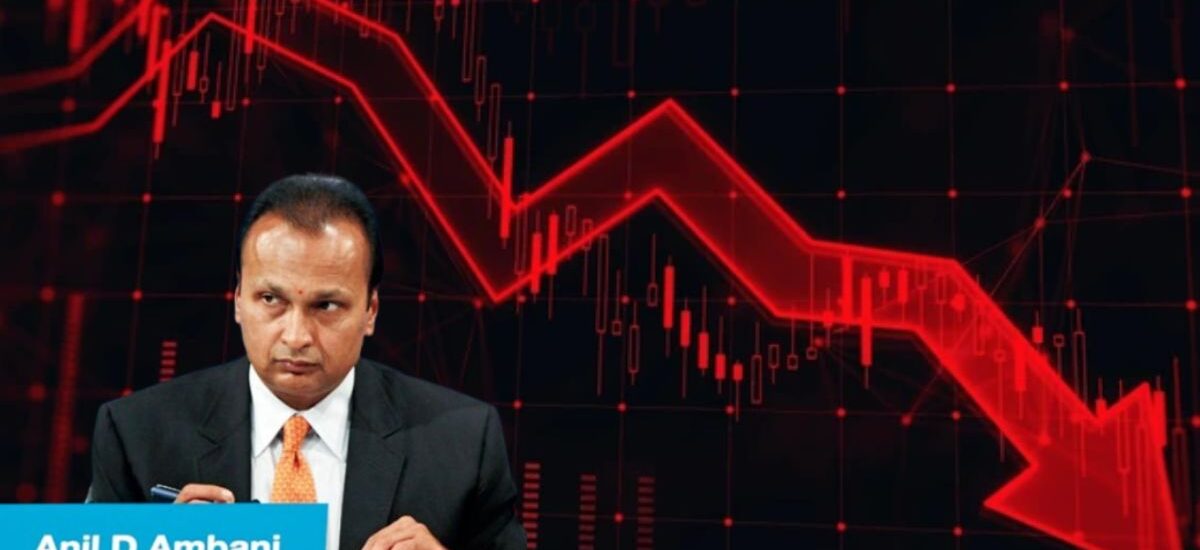Anil Ambani’s journey from being one of the world’s richest individuals to facing bankruptcy is a story of rapid ascent, aggressive expansion, and a dramatic fall. This article presents a comprehensive, guide of Anil Ambani’s life, business empire, family, net worth, and the key factors behind his financial collapse, drawing on the latest information and expert analysis.
Anil Ambani: Full Biography
Early Life and Education
- Full Name: Anil Dhirubhai Ambani
- Date of Birth: June 4, 1959
- Place of Birth: Chorwad, Gujarat, India
- Parents: Dhirubhai Ambani (founder of Reliance Industries), Kokilaben Ambani
- Siblings: Mukesh Ambani (elder brother), Nina Kothari, Deepti Salgaocar
- Education:
- Bachelor of Science, Kishinchand Chellaram College, Mumbai
- MBA, Wharton School, University of Pennsylvania (1983)
Personal Life
- Spouse: Tina Ambani (former Bollywood actress, married in 1991)
- Children: Jai Anmol Ambani, Jai Anshul Ambani
Family Background
| Name | Relation | Notes |
|---|---|---|
| Dhirubhai Ambani | Father | Visionary founder of Reliance Industries |
| Kokilaben Ambani | Mother | Philanthropist |
| Mukesh Ambani | Brother | Chairman, Reliance Industries |
| Tina Ambani | Wife | Chairperson of Kokilaben Dhirubhai Ambani Hospital |
| Jai Anmol Ambani | Son | Business professional |
| Jai Anshul Ambani | Son | Business professional |
| Nina Kothari | Sister | Entrepreneur |
| Deepti Salgaocar | Sister | Married to Goa-based industrialist |
The Rise: Building a Business Empire Of Anil Ambani
After Dhirubhai Ambani’s death in 2002, a bitter succession battle led to the 2005 split of the Reliance empire. Anil Ambani received control of key businesses in telecom, power, financial services, and entertainment. He quickly became a leading figure in India’s corporate world, with a reputation for bold moves and rapid growth.
Key Companies and Sectors
| Company | Sector | Peak Status |
|---|---|---|
| Reliance Communications | Telecom | Once India’s 2nd largest telecom operator |
| Reliance Power | Power Generation | Largest IPO in Indian history (2008) |
| Reliance Capital | Financial Services | Major NBFC, insurance, and asset management |
| Reliance Infrastructure | Infrastructure | Metro, roads, airports, power distribution |
| Reliance Entertainment | Media/Entertainment | Bollywood, Hollywood (DreamWorks JV) |
| Reliance Defence | Defence Manufacturing | Foray into government contracts |
Peak Net Worth and Achievements
- 2008: Net worth peaked at $42 billion, making Anil Ambani the 6th richest person globally, even richer than his brother Mukesh Ambani at the time.
- Reliance Power IPO (2008): Subscribed in less than a minute, raising over $3 billion.
- Hollywood Expansion: Invested $1.2 billion in a joint venture with Steven Spielberg’s DreamWorks.
- Political Role: Served as a Member of Parliament (Rajya Sabha) from 2004 to 2006.
Net Worth Timeline
| Year | Estimated Net Worth | Key Events |
|---|---|---|
| 2008 | $42 billion | Peak; 6th richest globally |
| 2015 | $2.5 billion | Decline begins due to telecom and power struggles |
| 2019 | $1.7 billion | Defaults, legal battles, asset sales |
| 2020 | Claimed zero in court | Declared bankruptcy in London court |
| 2025 | $300–500 million | Most assets lost or under stress |
The Fall: What Went Wrong?(Anil Ambani)
1. Aggressive Debt-Fueled Expansion
Anil Ambani’s companies borrowed heavily to fund rapid expansion, especially in the capital-intensive telecom and infrastructure sectors. Reliance Communications, for example, took on massive debt to compete in India’s telecom boom. When revenues failed to keep pace, the debt burden became unsustainable.
2. Strategic Missteps and Delayed Decisions
- Telecom Miscalculations: Reliance Communications struggled with high costs, falling tariffs, and intense competition. The entry of Reliance Jio (run by Mukesh Ambani) sparked a price war that Reliance Communications could not survive.
- Failed Asset Sales: Attempts to sell wireless assets to Aircel and cell towers to Brookfield Group fell through, leaving the company unable to deleverage.
- Late Realization: Anil Ambani was slow to recognize the terminal decline of his telecom business, missing opportunities to exit or pivot sooner.
3. Legal Battles and Regulatory Setbacks
- Lawsuits: Faced lawsuits from lenders, including Ericsson and three Chinese banks seeking repayment of over $680 million in personally guaranteed loans.
- SEBI Ban: In 2024, SEBI barred Anil Ambani from the securities market for five years and imposed a Rs 25 crore fine over fund diversion at Reliance Home Finance.
- Bankruptcy Proceedings: Multiple group companies, including Reliance Communications, Reliance Capital, and Reliance Naval & Engineering, entered insolvency and bankruptcy courts due to mounting defaults.
4. Market Volatility and Economic Downturns
- 2008 Global Financial Crisis: The downturn hit valuations in telecom and power hard, eroding asset values and investor confidence1.
- NBFC Crisis: Reliance Capital was hit by India’s NBFC (Non-Banking Financial Companies) crisis, leading to defaults and regulatory scrutiny6.
- Sectoral Headwinds: The power sector faced regulatory hurdles, land acquisition issues, and project delays. The Allahabad High Court’s decision to quash land acquisition for a major power project in Dadri, Uttar Pradesh, was a major blow.
5. Asset Sales and Personal Guarantees
To manage mounting debt, Anil Ambani was forced to sell valuable assets, including stakes in Reliance Power, Reliance Infrastructure, and Mumbai’s electricity distribution business (sold to Adani Group). He also provided personal guarantees for loans, which later led to personal bankruptcy claims in court.
6. Failed Diversification and Innovation
- Entertainment and Defence: Forays into entertainment (Adlabs, DreamWorks) and defence manufacturing failed to generate sustainable profits.
- Lack of Adaptability: Unlike Mukesh Ambani, who pivoted Reliance Industries to new-age businesses like digital and retail, Anil’s group struggled to innovate and adapt.
Current Financial Status (2025)
- Net Worth: Estimated at $300–500 million, a fraction of his 2008 peak.
- Ongoing Legal and Financial Challenges: Continues to face lawsuits, insolvency proceedings, and regulatory bans.
- Asset Base: Most of his once-mighty empire has been sold, is under insolvency, or is significantly diminished.
- Attempted Comebacks: Focusing on debt-free strategies and sectors like solar and defence, but with limited success so far.
Major Companies: Status Overview (2025)
| Company | Sector | 2025 Status |
|---|---|---|
| Reliance Communications | Telecom | Bankrupt, assets sold/liquidated |
| Reliance Capital | Financial Services | Under insolvency, being sold to repay debt |
| Reliance Power | Power Generation | Surviving but heavily indebted |
| Reliance Infrastructure | Infrastructure | Facing insolvency proceedings |
| Reliance Entertainment | Media/Entertainment | Active, but scaled down |
| Reliance Defence | Defence Manufacturing | Limited operations, focus on government deals |
Key Events Timeline
| Year | Event |
|---|---|
| 2005 | Reliance Group split: Anil gets telecom, power, finance, entertainment |
| 2008 | Reliance Power IPO; Net worth peaks at $42 billion |
| 2010 | Expansion into entertainment (DreamWorks JV), infrastructure projects |
| 2017 | Failed asset sales (Aircel, Brookfield), telecom crisis deepens |
| 2018 | Defaults on $300 million bonds, creditors queue up |
| 2019 | RCom, Reliance Naval, and others enter bankruptcy/insolvency proceedings |
| 2020 | Claims zero net worth in UK court; legal battles with Chinese banks, Ericsson |
| 2021 | Reliance Capital files for bankruptcy |
| 2024 | SEBI bans Anil Ambani from securities market for five years |
| 2025 | Net worth estimated at $300–500 million; focus on solar, defence, limited comeback |
Lessons from Anil Ambani’s Downfall
1. Debt Management is Crucial
Excessive leverage can fuel rapid growth but also magnifies risk. Anil Ambani’s downfall is a textbook case of how unchecked borrowing can destroy even the largest empires.
2. Diversification and Innovation Matter
Reliance on a few sectors (telecom, power) left the group vulnerable to sector-specific shocks. Failure to innovate or pivot, especially in the face of technological disruption, proved costly.
3. Regulatory and Legal Compliance
Navigating India’s complex regulatory landscape is critical. Legal battles, regulatory bans, and compliance failures can cripple even the biggest players.
4. Timely Decision-Making
Delayed exits and slow response to market realities (as seen in telecom) can exacerbate losses. Quick, decisive action is essential in fast-changing industries.
5. Importance of Corporate Governance
Asset diversion, opaque dealings, and lack of transparency led to regulatory action and loss of investor trust.
Comparing the Ambani Brothers: A Tale of Two Empires
| Aspect | Mukesh Ambani | Anil Ambani |
|---|---|---|
| Key Businesses | Oil & Gas, Petrochemicals, Jio, Retail | Telecom, Power, Finance, Entertainment |
| Net Worth (2025) | $90+ billion | $300–500 million |
| Approach | Conservative, innovation-driven | Aggressive, debt-fueled expansion |
| Strategic Pivot | Digital, Retail, Green Energy | Attempted defence, solar, entertainment |
| Outcome | Richest in Asia, global expansion | Bankruptcy, asset sales, legal battles |
Conclusion: The Unmaking of a Billionaire
Anil Ambani’s financial downfall is a cautionary tale for entrepreneurs and business leaders. From a $42 billion fortune and global prominence to bankruptcy and regulatory bans, his story underscores the dangers of overleveraging, delayed decision-making, and failure to adapt to changing markets. While his journey began with immense promise and opportunity, a series of strategic missteps, legal troubles, and market headwinds led to the unravelling of his empire.
Today, Anil Ambani’s experience serves as a powerful lesson in prudent risk management, the need for innovation, and the importance of sound corporate governance. As he attempts a limited comeback, his legacy remains a stark reminder of how fortunes can change in the world of business—sometimes, in the blink of an eye.
Sources:
This article is based on the latest information from financial news, regulatory filings, and business case studies as of June 2025.
You may also like : Shreyas Iyer, Can AI Really Replace Programmers, Raja Saab, Toyota Fortuner Legender, Swastik Chikara, Khan Sir’s Hidden Marriage
Follow Us On : Facebook, LinkedIn






